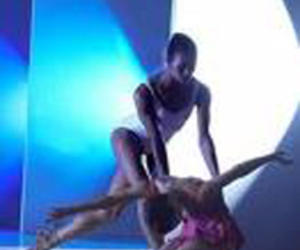A Cuban celebration: Troupe captures spirit, energy of Mateo’s homeland
- Submitted by: manso
- Arts and Culture
- 05 / 19 / 2011

By Karen Campbell. Globe Correspondent / May 18, 2011. CAMBRIDGE — One of choreographer José Mateo’s most impressive traits over the course of his company’s 25-year history is his embrace of a wide palette of music, from Bach and Mozart to more adventurous fare by such composers as Schnittke, Ginastera, Bartók, and Górecki. He seems to seek out music that challenges his choreographic compass yet allows him to remain true to his core aesthetic of neoclassicism.
CUBANIA! José Mateo Ballet Theatre
At: Sanctuary Theatre, Cambridge, through May 22.www.ballettheatre.org. For the final program of José Mateo Ballet Theatre’s landmark anniversary year, the Cuban-born Mateo goes back to his roots, with three ballets choreographed to Cuban composers. But don’t expect just the jaunty percolating rhythms of the rumba or conga. Mateo has gravitated toward more sophisticated fare. In fact, the world premiere “Pagano y No’’ is set to the first original score Mateo’s company has ever commissioned. The “Santiarican Blues Suite’’ by New York-based composer Aruan Ortiz, who hails from the same town in Cuba as Mateo, transforms rhythms, chants, and melodies of Santiago de Cuba into a stridently contemporary score with only occasional references to folk material and choral songs.
Unfortunately, the score’s episodic, nonlinear structure and lack of cohesive development don’t give the dance much direction. After a couple of movements filled with posturing, as if totemic figures come to life, the ballet finally perks up in the third movement, in which an intimation of a rhythmic groove puts a saucy sashay into Lotsie Cash’s step and a macho swagger into Mark Kehlet Schou’s jumps and spins. Elisabeth Scherer’s duet with August Lincoln Pozgay opens into sweeping lifts and partnered turns, but it isn’t until the final movement that we get the expected sizzle, with dancers flying on and off stage. The backdrop offers projected slides of nature-inspired abstract imagery by photographer Linda Hirsch.
In contrast, the mostly spare, rather elegiac music of Leo Brouwer’s Concerto for Guitar and Violin has a subtle, beautifully conceived through-line that inspires “Escape,’’ one of Mateo’s most compelling works. It’s a gorgeous, powerful piece, setting the corps in eye-catching but unpredictable floor patterns that contrast curved and angled shapes.
But it is the central pair, Angie DeWolf and Schou, who resonate most strongly in a beautifully calibrated partnering that is both technically sharp and emotionally expressive. Without mime or story line, the two portray the nuances of shifting emotional dynamics, from shaking fists of rage to tender caresses of forgiveness. Perfectly timed lifts send DeWolf back over Schou’s shoulder, flexed luxuriously in a deep arch or fully extended in a split.
Manuel Saumell’s “Danzas’’ evokes a Cuba of yesteryear in Mateo’s “Ayer Pasado.’’ Though the choreography is not particularly distinctive, it is sweet and accessible, calling up Mateo’s lyrical, romantic streak. It plays off the music’s familiar rolling rhythms and tuneful melodies. Madeleine Bonn’s introspective solo with a handkerchief evokes a long goodbye. In Cash’s hands, the cloth becomes a fluttering object of flirtation during a charming duet with Jacob Louis Hoover. DeWolf’s quicksilver duet with Ivaylo Alexiev is sheer exuberance.
Karen Campbell 2011 Globe Newspaper Company.
Source: www.boston.com/ae/theater_arts/articles/2011/05/
Comments